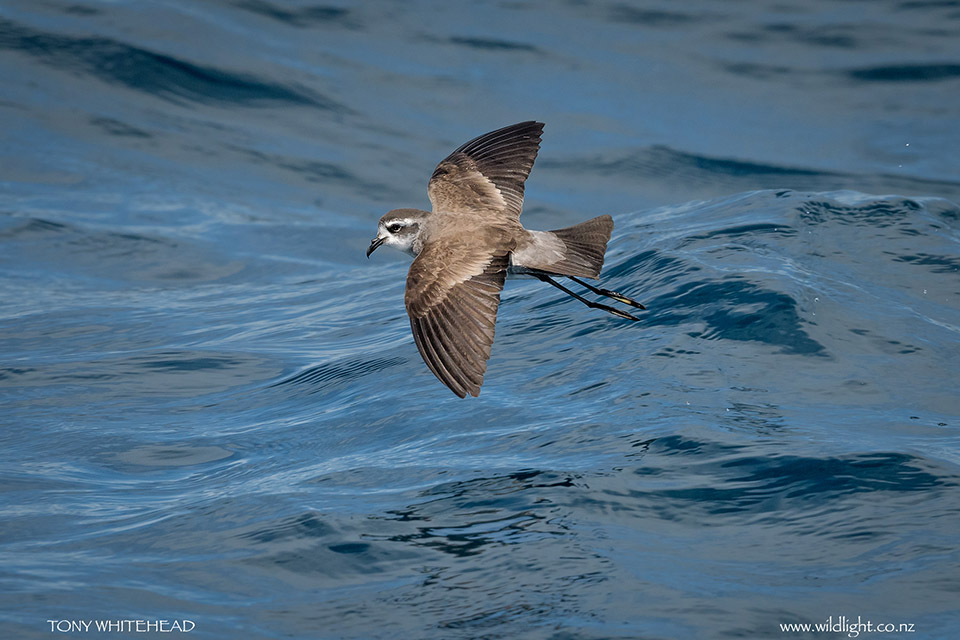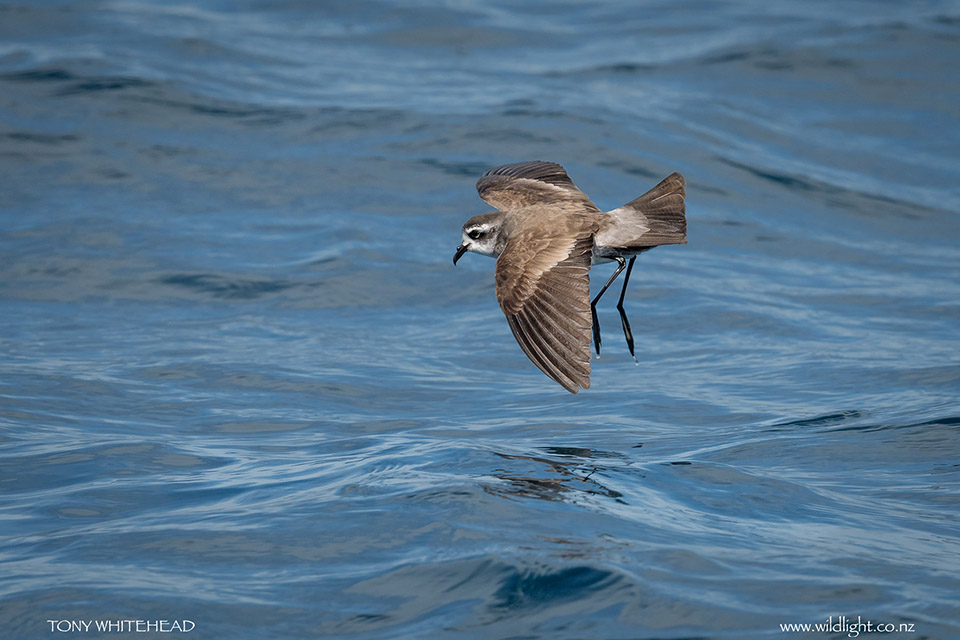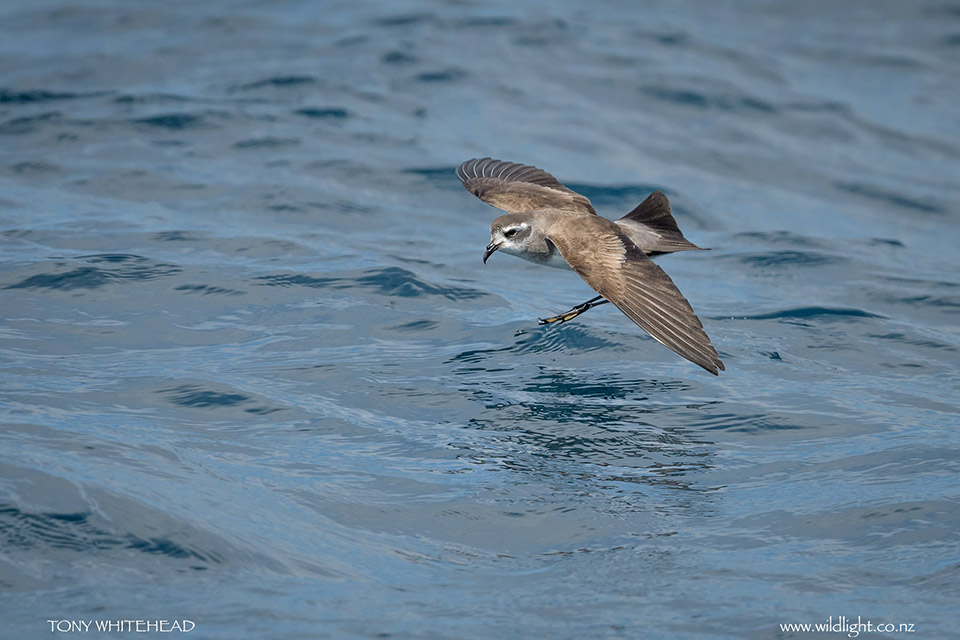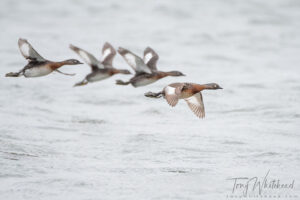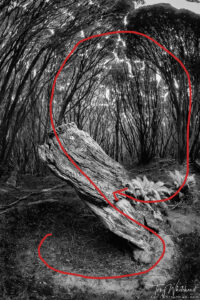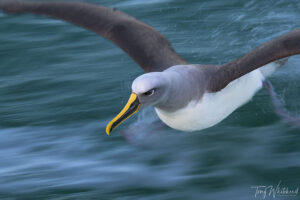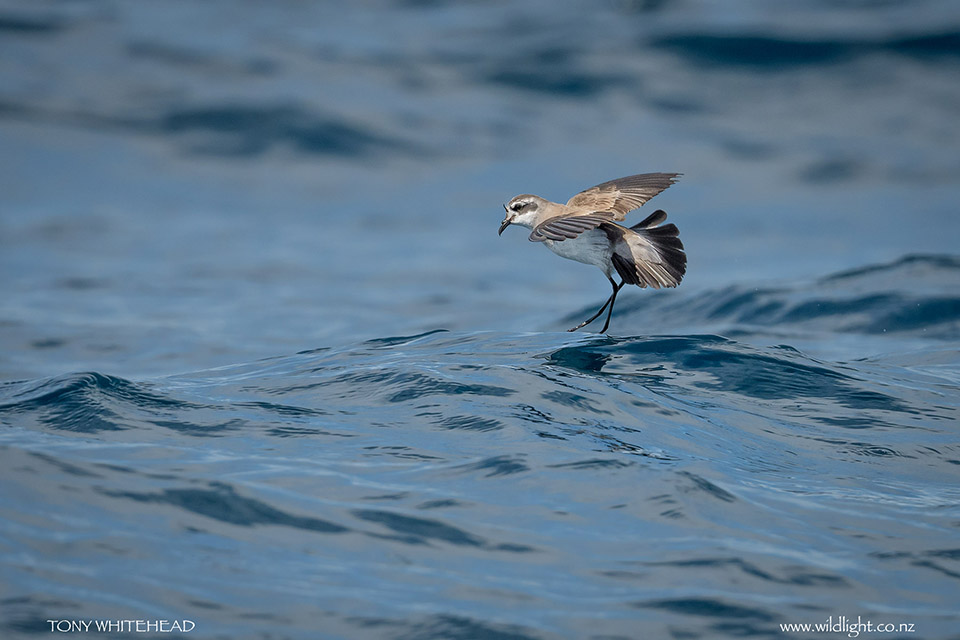
As mentioned in my last post, my hope for our Hauraki Gulf trip was to get some better images of White-faced Storm Petrel (Pelagodroma marina). They are a little overshadowed by the status that the New Zealand Storm Petrel enjoys, having been rediscovered after presumed extinction, but are equally buoyant birds that float in the air over the waves to feed. Storm Petrels really have mastered the interface between air and water and bounce along it with delightful delicacy. Being small and erratically moving they are difficult to capture so it needs many frames in the hope of achieving a record of a sharply focussed bird in an interesting pose. Working from a moving boat deck creates the ideal opportunity for a sharply focussed water surface with a blurry bird doing something interesting so the shots that work are rewarding.
Storm Petrels are delightful to watch delicately fluttering over the water and bounce over the surface appearing weightless. They will often seem to stand on the water surface and bend forward to pick a morsel from beneath the surface rather than plunge into it as Prions and Shearwaters do. Part of our fascination with birds is envy of their ability to fly and Storm Petrels have a unique ability to waft weightless over water that only adds to that avian envy. Their apparent water walking ability has given rise to a common name among fisherman as Jesus Christ bird.
Sadly most of their human neighbours living in the city of Auckland will have never seen a Storm Petrel. They are true seabirds, living their lives at sea only returning to land under cover of dark to breed in burrows. The New Zealand mainland was previously a haven for seabirds that evolved in this environment over millions of years. Humans arrived bringing mammalian predators which pushed the seabirds off the mainland to refuge islands where few humans are privileged to visit. The only opportunity to appreciate these birds is from a boat and only a small proportion of the population have the inclination or opportunity to get into the seabird’s environment. Of those that do only a small proportion fully appreciate the marvels that these birds are. It would be great if a module on seabirds were included in the school curriculum and included a pelagic trip to see these taonga face to face. Wider appreciation of these birds that live largely out of sight and so out of mind would be a step toward reversing some of the catastrophic effects we have had on their habitat.
White-faced Storm Petrels are relatively common in New Zealand waters during their breeding season from August to April. Like many seabirds they form monogamous pairs and breed in burrows on pest-free islands. Being small, delicate birds (slightly smaller than a thrush) they are easily preyed upon by introduced mammals so rely on pest free sites to succeed. After breeding they migrate to the tropical Pacific as far away as Galapagos and Ecudor. They are generally solitary when seen feeding at sea but can aggregate around a good food source which they locate by smell. At one part of our recent trip we had a least a dozen feeding together around a workup of trevally which had also attracted a large number of Fairy Prions.
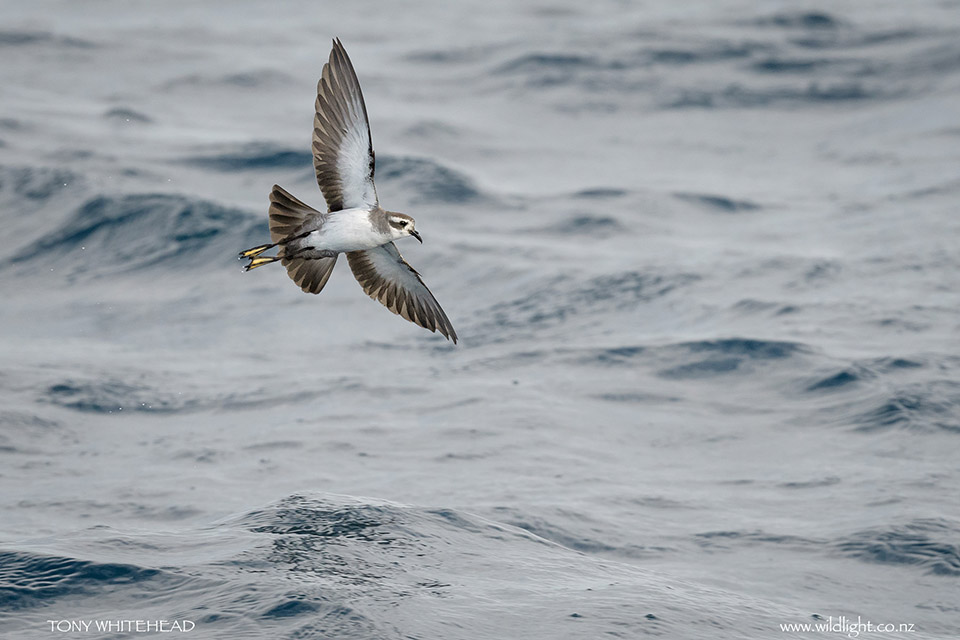
While not achieving anything really outstanding I am happy to have improved my collection of White-faced Storm Petrel images. They are a pleasing reminder of the joy of seeing these special creatures in the habitat to which they are so beautifully adapted. For more information see their page on New Zealand Birds Online.
All photos with Nikon D500 and Nikon 500mm f5.6 PF lens.
